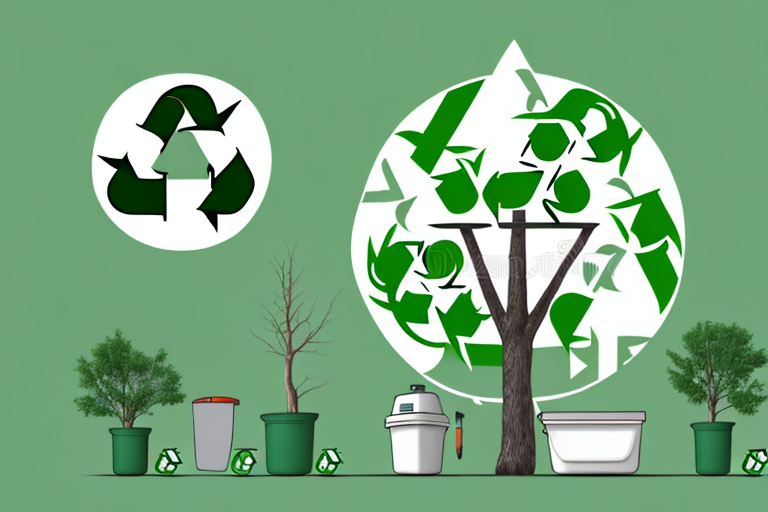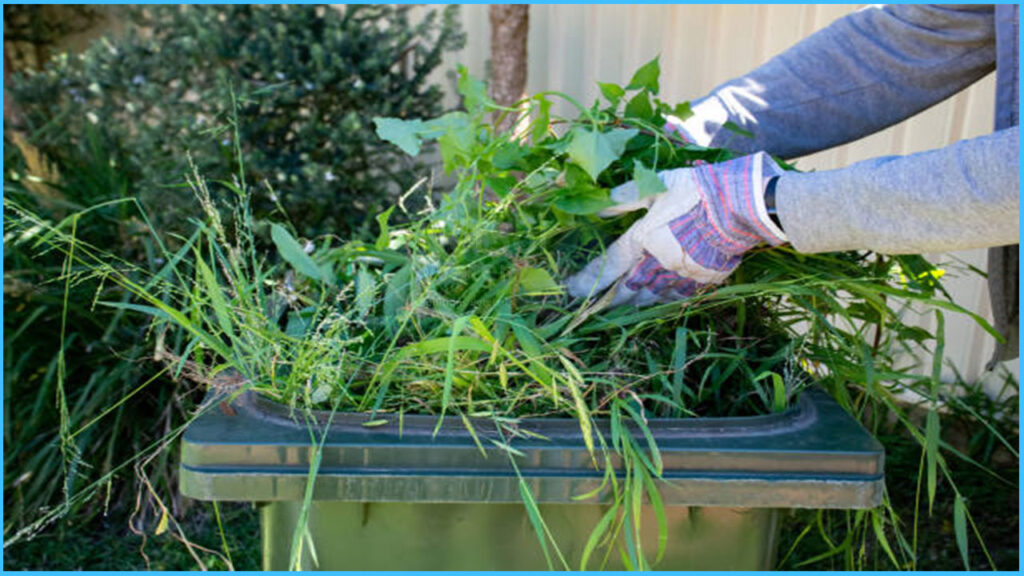In today’s world, there is an increasing emphasis on the importance of sustainable practices in every aspect of our lives. From transportation to energy consumption, people are making conscious efforts to reduce their environmental footprint. One area that often goes unnoticed is tree removal and the subsequent waste disposal. In this article, we will explore the significance of eco-friendly tree removal and how it can be done with ease, ensuring minimal impact on the environment.
Understanding the Importance of Eco-Friendly Tree Removal
Traditional tree removal methods and green waste removal can have a severe environmental impact. The use of heavy machinery and excessive cutting can disrupt ecosystems and contribute to soil erosion. Additionally, the disposal of tree waste often involves burning, which releases harmful pollutants into the air. This is where the significance of eco-friendly practices in arboriculture becomes evident.
When it comes to tree removal, it is crucial to consider the environmental consequences of our actions. Traditional methods, such as using large machinery, can cause significant damage to the surrounding environment. The weight of these machines can compact the soil, making it difficult for new plants to grow and disrupting the delicate balance of the ecosystem. Furthermore, the root systems of neighboring trees and plants can be harmed, leading to a loss of biodiversity and habitat for various organisms.
But the negative impact doesn’t stop there. The use of heavy machinery and excessive cutting can also contribute to soil erosion. When trees are removed without considering the stability of the soil, it can lead to the erosion of valuable topsoil, which is essential for the growth of plants and the overall health of the ecosystem. This erosion can result in the loss of nutrients, increased sedimentation in nearby water bodies, and even the alteration of natural drainage patterns.

The Environmental Impact of Traditional Tree Removal
When trees are removed using conventional methods, large machinery is typically employed. This can damage the surrounding environment by compacting soil, damaging root systems, and disrupting the natural habitat of various organisms. Moreover, such practices can lead to increased greenhouse gas emissions and air pollution.
In addition to the physical damage caused by heavy machinery, traditional tree removal methods also contribute to greenhouse gas emissions and air pollution. The use of fossil fuel-powered machinery releases carbon dioxide and other greenhouse gases into the atmosphere, contributing to climate change. Furthermore, the burning of tree waste, which is a common practice in traditional tree removal, releases harmful pollutants such as carbon monoxide, nitrogen oxides, and particulate matter into the air. These pollutants can have detrimental effects on human health and the environment, contributing to respiratory problems, smog formation, and even the acidification of water bodies.
Benefits of Eco-Friendly Practices in Arboriculture
Eco-friendly tree removal methods offer numerous benefits to both the environment and the community. By using sustainable techniques, arborists can minimize disruptions to the ecosystem, preserve biodiversity, and maintain soil quality. Furthermore, when tree waste is properly managed, it can be repurposed for beneficial uses like composting and mulching, contributing to the sustainability of the overall landscape.
One of the key benefits of eco-friendly tree removal practices is the preservation of biodiversity. By carefully assessing the impact of tree removal on the surrounding environment, arborists can minimize the disturbance to wildlife habitats and ensure the survival of various species. This preservation of biodiversity is crucial for maintaining the overall health and resilience of ecosystems, as each species plays a unique role in the functioning of the ecosystem.
Another significant benefit of eco-friendly practices is the maintenance of soil quality. Instead of using heavy machinery that can compact the soil, arborists employ techniques that minimize soil disturbance. This allows the soil to retain its natural structure and composition, promoting healthy root growth and nutrient cycling. By preserving soil quality, eco-friendly tree removal practices contribute to the long-term sustainability of the landscape and support the growth of other plants and organisms.
Furthermore, the proper management of tree waste is an essential aspect of eco-friendly practices. Instead of burning the waste, which releases harmful pollutants into the air, arborists can repurpose it for beneficial uses. Tree waste can be chipped and used as mulch, which helps retain soil moisture, suppress weed growth, and improve overall soil health. Additionally, it can be composted, providing a nutrient-rich soil amendment that can be used in gardens and landscaping projects. By repurposing tree waste, arborists contribute to the circular economy and reduce the need for synthetic fertilizers and other environmentally harmful products.
In conclusion, eco-friendly tree removal practices are crucial for minimizing the environmental impact of arboriculture. By employing sustainable techniques, arborists can preserve biodiversity, maintain soil quality, and reduce greenhouse gas emissions and air pollution. It is important for individuals and communities to prioritize eco-friendly practices when it comes to tree removal, ensuring the long-term health and sustainability of our natural environment.

Key Principles of Green Waste Disposal
Effective waste disposal is a crucial aspect of eco-friendly tree removal. Understanding what constitutes green waste and its role in sustainable landscaping is essential for navigating the disposal process with ease.
When it comes to green waste, it is important to know what it is and what it isn’t. Green waste refers to organic materials derived from plants, such as leaves, branches, and wood chips. It excludes items like plastics, metals, and non-organic waste. Proper identification of green waste ensures that it can be disposed of appropriately, promoting sustainability.
However, green waste is not just about waste management; it also plays a vital role in sustainable landscaping practices. By repurposing green waste through composting, it becomes a valuable resource. Composting is a natural process where organic waste decomposes and turns into nutrient-rich soil amendment. This process benefits plant growth, reduces the need for synthetic fertilizers, and helps retain soil moisture.
Composting green waste not only reduces the amount of waste going to landfills but also provides a sustainable solution for improving soil health. The nutrient-rich compost can be used to enrich garden beds, nourish plants, and promote a thriving ecosystem. It creates a closed-loop system where organic materials are recycled back into the environment, minimizing the need for external inputs.
In addition to composting, green waste can also be used for mulching. Mulching involves spreading a layer of organic material, such as wood chips or leaves, around plants. This layer acts as a protective barrier, preventing weed growth, conserving soil moisture, and regulating soil temperature. Mulching not only helps in weed control but also enhances the aesthetics of the landscape.
Furthermore, green waste can be utilized in bioenergy production. Biomass, derived from green waste, can be converted into renewable energy sources such as biogas or biofuel. This process reduces dependence on fossil fuels and contributes to a greener and more sustainable energy sector.
By understanding the role of green waste in sustainable landscaping, individuals and communities can make informed choices when it comes to waste disposal. Whether it’s through composting, mulching, or bioenergy production, green waste can be transformed into valuable resources that benefit both the environment and our gardens.
Steps to Eco-Friendly Tree Removal
Carrying out eco-friendly tree removal entails a series of steps aimed at minimizing environmental impact from start to finish.
When it comes to tree removal, it is important to prioritize the health and well-being of both the tree and its surrounding environment. By following eco-friendly practices, arborists can ensure that the process is not only efficient but also sustainable.
Pre-Removal Considerations for Minimal Impact
Prior to tree removal, arborists assess the tree’s condition and surrounding environment. They take into account various factors such as the tree’s structural stability, potential risks, and the presence of wildlife habitats. By carefully evaluating these aspects, arborists can determine the best approach to minimize damage to nearby structures, protect wildlife habitats, and prevent soil erosion.
Proper planning and communication are crucial in this stage. Arborists work closely with property owners to understand their specific needs and concerns. By involving all stakeholders in the decision-making process, arborists can ensure a successful and environmentally responsible removal process.
Safe and Sustainable Tree Cutting Techniques
Arborists trained in eco-friendly practices utilize specialized cutting techniques that minimize waste production and optimize resource utilization. One such technique is directional felling, where trees are carefully guided during the fallen process to prevent unnecessary damage to the surroundings.
In addition to careful cutting techniques, arborists also prioritize the use of manual tools and small machinery. By avoiding heavy machinery, they minimize soil compaction and reduce the risk of damage to the surrounding vegetation. This approach not only minimizes the environmental impact but also ensures the safety of the workers involved in the tree removal process.

Post-Removal Cleanup and Green Waste Management
After tree removal, the cleanup process plays a vital role in waste disposal. Arborists ensure that all tree debris is collected, sorted, and properly managed. Wood chips and branches can be chipped for mulching purposes, providing a natural and beneficial way to enrich the soil and suppress weed growth.
Furthermore, larger timber that is removed during the process can be repurposed for various uses such as furniture or firewood. This not only reduces waste but also promotes sustainability by giving the wood a second life. Any remaining green waste, such as leaves or small branches, can be composted, completing the sustainable cycle.
Eco-friendly tree removal is not just about removing a tree; it is about considering the broader impact on the environment and taking steps to minimize it. By following these steps, arborists ensure that tree removal is done in a responsible and sustainable manner, preserving the beauty and health of our natural surroundings.
Navigating the Challenges of Green Waste Disposal
Despite the numerous benefits of eco-friendly tree removal, there are challenges that need to be addressed to ensure effective waste disposal.
Common Misconceptions about Green Waste Disposal
One common misconception is that green waste can be indiscriminately dumped in landfills. However, this not only wastes valuable organic matter, but it also contributes to greenhouse gas emissions. Proper disposal methods, such as composting or mulching, should be implemented to fully utilize the potential of green waste.
Overcoming Obstacles in Eco-Friendly Tree Removal
Sometimes, logistical and regulatory obstacles can hinder the implementation of eco-friendly tree removal and waste management practices. However, with growing awareness and technological advancements, solutions are being developed to overcome these challenges. Collaboration between arborists, policymakers, and the community is essential to ensure the adoption of sustainable practices.
Future Trends in Eco-Friendly Tree Removal and Green Waste Disposal
The field of eco-friendly tree removal and green waste disposal is continuously evolving. Innovations in waste processing and a growing demand for sustainable services are shaping the future of arboriculture.
Innovations in Green Waste Processing
New technologies are being developed to streamline green waste processing. Advanced composting methods, such as vermicomposting and anaerobic digestion, offer faster decomposition and higher-quality end products. Additionally, biomass conversion technologies are being explored, which can transform organic waste into renewable energy sources.
The Growing Demand for Sustainable Tree Removal Services
As society becomes more environmentally conscious, the demand for eco-friendly tree removal services is expected to rise. Arborists who embrace sustainable practices and offer innovative solutions will be at the forefront of this evolving industry. The integration of technology, such as remote sensing and data analytics, will further enhance the efficiency and effectiveness of tree removal processes.
In conclusion, eco-friendly tree removal and green waste disposal are vital components of sustainable arboriculture. By understanding the importance of eco-friendly practices, adhering to key principles, and tackling associated challenges, we can navigate the process of tree removal with ease without compromising the environment. As we look ahead, innovative solutions and increasing demand for sustainable services will shape the future of this industry, ensuring a greener and healthier world for generations to come.

